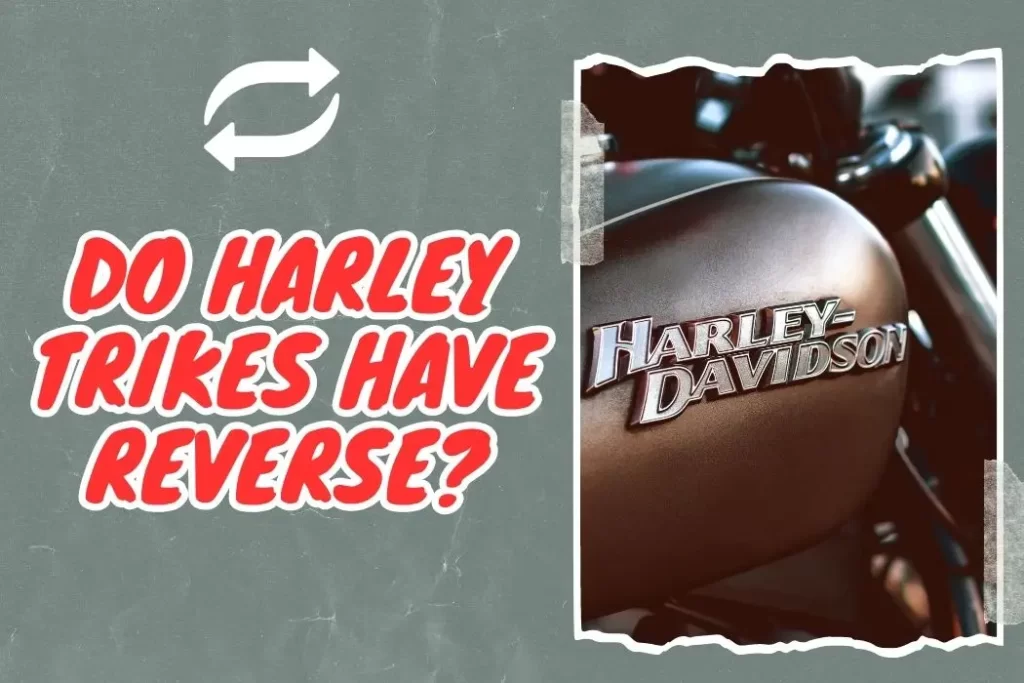Harley-Davidson, a brand that epitomizes power, style, and the spirit of freedom, has always been a coveted ride for many. However, when it comes to their trikes, a question frequently arises – Do Harley trikes have a reverse feature?
This query is not merely a matter of curiosity, but a significant consideration for many riders given the substantial weight and size of these machines.
In this article, we will explore this topic in depth, providing you with detailed information that will not only answer your question but also broaden your knowledge about Harley trikes.
So, let’s embark on this journey into the realm of Harley trikes and their reverse mechanisms.
Do All Harley Trikes Have Reverse?
Indeed, all Harley trikes that come straight from the factory are equipped with a reverse mechanism. This feature is not just a convenient add-on but a necessity considering the hefty weight of these vehicles. Picture yourself trying to manually push a heavy trike backward – quite a daunting task, right? That’s where the reverse mechanism comes into play, facilitating riders to maneuver their trikes in confined spaces.
However, if you’re contemplating a custom Harley trike conversion, bear in mind that the reverse mechanism might not be a standard inclusion. But fret not, many conversion kit manufacturers offer either an electric or mechanical trike reverse mechanism as an optional add-on.

“Harley’s decision to include reverse systems in their trikes shows their understanding of their customer base. Many Harley riders are older, and a reverse system can make riding more accessible and enjoyable for them.”
— Mark Thompson, a motorcycle journalist
Types of Reverse Systems in Harley Trikes
Harley trikes typically employ one of two types of reverse systems – electric and mechanical. Each type has its own set of pros and cons.
The electric reverse system, which was more common in the past, essentially involves a small electric motor linked to the rear wheel. This system draws power from the motorcycle’s battery and is designed for brief usage periods. However, prolonged use can deplete the battery or even cause damage to the electric motor.
On the flip side, the mechanical reverse system is gaining popularity. This system involves an additional gear incorporated into the transmission that utilizes the engine’s power rather than electricity. The primary advantage of this design is that the reverse speed can be easily modulated by the throttle. However, it’s more challenging to install and carries a higher price tag.
Harley Models with Reverse Gear
Not all Harley-Davidson motorcycles come with a reverse gear. This feature is typically reserved for their heavier trikes, which can be challenging to move manually due to their weight. The Harley-Davidson models that come equipped with a reverse gear are the Tri Glide Ultra and the Freewheeler. Both of these models are three-wheelers, which due to their substantial weight, make the reverse gear a necessity rather than a luxury.
Community Perception of Reverse Gear on Harleys
The motorcycle community, especially Harley riders, have mixed feelings about reverse gears. Some riders believe that reverse gears are unnecessary, adding extra weight and complexity to the bike. They argue that motorcycles, unlike cars, are light enough to be moved manually and have a tight turning radius, making reverse gears redundant.
However, there’s another group of riders who appreciate the convenience of reverse gears, especially those who own heavy trikes. These riders find the reverse gear extremely useful when parking or maneuvering their bikes in tight spaces. They argue that the extra cost and weight of the reverse gear are a small price to pay for the added convenience.

“I’ve been riding Harleys for over 20 years, but when I switched to a trike, the reverse system was a game-changer. It makes parking and maneuvering in tight spots so much easier. I can’t imagine handling my trike without it”
— John, a long-time Harley rider
How to Reverse a Harley Trike
Reversing a Harley trike is a simple process, but it can vary slightly depending on whether your trike has an electric or mechanical reverse system. For an electric reverse system, you’ll need to start the engine, put it in neutral, disengage the parking brake, and then turn on the reverse activation switch. Once both the neutral and activation lights are on, you can use the horn button to reverse your Harley. Remember to ensure the area behind the bike is clear before reversing.
For a mechanical reverse system, the process is slightly different. This system uses an extra gear added to the transmission, and the reverse speed can be controlled by the throttle. It’s a more robust system, capable of handling steeper inclines, but it’s also more expensive and harder to install.
In both cases, it’s important to familiarize yourself with your trike’s specific system and practice in a safe, open area before attempting to reverse in tighter spaces or on public roads.
Conclusion
In conclusion, all factory Harley trikes come with a reverse system, making it easier for riders to maneuver these heavy vehicles. Whether you’re a seasoned rider or a potential buyer, understanding the reverse systems in Harley trikes can enhance your riding experience and help you make an informed decision. So, next time you’re on a Harley trike, remember, you have the power to move forward and backward with ease. Happy riding!
As an Amazon Associate, I earn from qualifying purchases, at no additional cost to you. Read Our Affiliate Disclosure.

